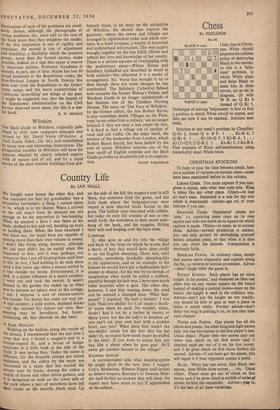Wiltshire
Tito Shell Guide to Wiltshire, originally pub- lished in 1935, now reappears enlarged and revised by Mr. David Verey (Wiltshire: A Shell Guide. Faber, 12s. 6d.), and embellished by many new and interesting illustrations. The Prospective traveller in Wiltshire will have his appetite whetted by clearly selected aspects both of nature and of arr, and by a rapid survey of the most notable buildings from pre- historic times, in an essay on the antiquities of Wiltshire. He should then explore the gazetteer, where the towns and villages are arranged in alphabetical order and which con- tains, in a brief compass, a wealth of historical and architectural information. This was largely brought together by the late Edith Olivier and reflects her love and knowledge of her county. There is a certain amount of overlapping with the preliminary essay—Wilton House and Salisbury Cathedral are described in detail in both sections—but otherwise it is a model of arrangement. Mr. Verey has brought it up to date though there are some changes he has overlooked. The Salisbury Cathedral School now occupies the former Bishop's Palace, and Wardour Castle is no longer uninhabited—it has become one of the Cheshire Nursing Homes. The essay on 'The Face of Wiltshire,' by the former editor, the late Robert Byron, is also somewhat dated. Villages on the Plain, even 'seven miles from a railway,' are no longer isolated if they are near a bus route—in fact, it is hard to find a village out of earshot of road and rail traffic. On the other hand, the menace of the weekender from London, which Robert Byron feared, has been halted by the cost of travel. Wiltshire remains one of the least spoilt of English counties and the Shell Guide provides an invaluable aid to its explora-


































 Previous page
Previous page